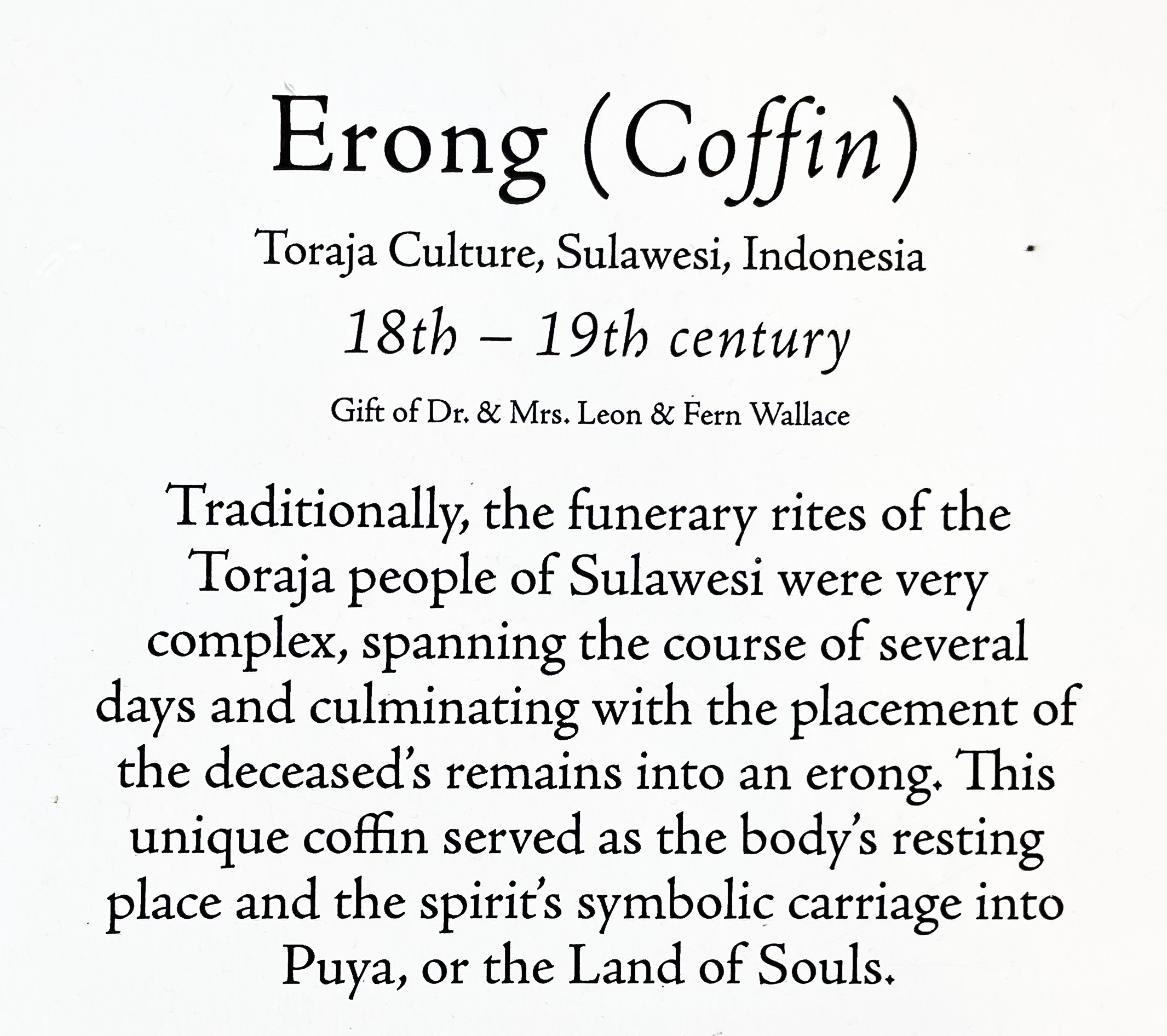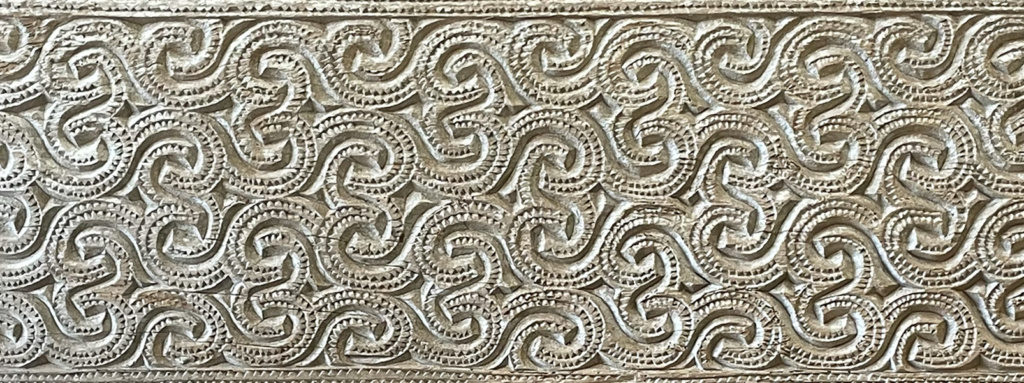On my recent visit to the Bowers Museum in Santa Ana, California, I discovered some fascinating woodwork from the island of Sulawesi. Lying just east of Borneo, Sulawesi is part of Indonesian Archipelago. The woodwork was done by the Toraja people, an ethnic group indigenous to South Sulawesi. The Torajans are known for their elaborate funeral rites, and this can be seen in the exquisite woodwork on the erong, or coffin, displayed at Bowers.
This was the sign next to the object.

The pattern on the main part of the erong was unlike anything I’ve seen before.

Stylistically the pattern was unique, but mathematically it had to be one of just 17 possible patterns. That’s right, mathematically speaking, there are only 17 types of planar patterns. This is a classic result, and I’ve written about it in a previous blog.
I started analyzing the pattern on the erong. There were no lines of mirror symmetry. There were two fairly obvious rotational points of order 2, indicated on the figure with purple and yellow dots. (More about rotational symmetry in my previous blog)

Finally, the pattern had a glide reflection symmetry. This is the most difficult type of symmetry to understand, and this video helps explain it.

This pattern is labeled 22X in the orbifold notaion. Watch the video to understand where the symbols in the notation are coming from.
This is a rare pattern to find “in the wild”. Fortunately, local museums like the Bowers can take us on intellectual adventures, whether they be artistic, mathematical, or both!
